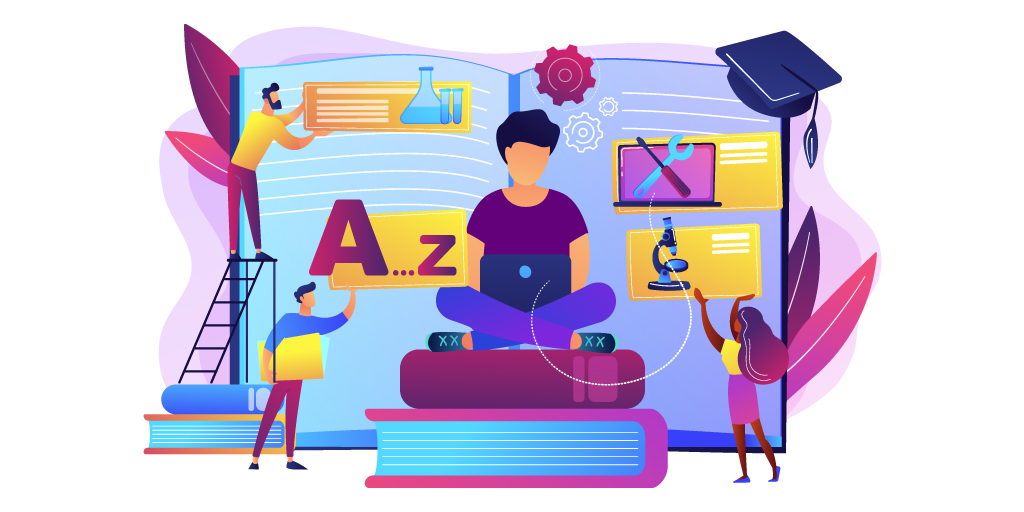
It sounds crazy—to me, literally crazy! Crazy to think about how we organize and design learning most of the time. We have content or standards that we need to teach of course, but how do we go about arranging a lesson or creating an activity? 99.9% of the time, we use an adult perspective.
We might get ideas on Pinterest from other adults, we might use a textbook that was written and edited by adults, we might use strategies that we enjoy as adults, or—if we are really cutting-edge—we might organize around a topic that (adults think) will be relevant to our students. In the end, it’s all about the adults. How upside down is that?!
Now, it does make a lot of sense when you think about it. Adults are the ones spending the money on curricula. Adults are the ones scanning through Teachers Pay Teachers for a new classroom idea or bulletin board. If people want to make money in education, they need to market to adult tastes—not to what kids actually want, like, and need.
Allowing Student Choice
So, how important is it that we listen to kids when it comes to these decisions? Isn’t it possible that we have been doing a great job over the years by allowing teachers to make these decisions? I think the answer is complex.
Yes, teachers know what kids need—for the most part. We aren’t talking about allowing kids to decide which phonics rules they learn and in which order. We aren’t talking about students thinking that history is boring so they won’t need to learn about that. What we are talking about is allowing student choice in some aspect of the learning, and that those choices are a result of students’ reflection and feedback about their learning.
For example, when I was a teacher, I had what I felt was a great unit on Of Mice and Men. It was usually a story that students liked and could relate well to, plus it was short, which they also liked. I would set up my classroom in “bunks” like the bunkhouse, which is one of the main settings of the story. Each set of desks (bunk) had a character, who the students followed and studied. I thought it was wonderful, but after a few years of doing the lesson, I had some feedback from a student who didn’t think it made much sense. He said, “You just rearranged our desks, but the classroom didn’t look anything like the bunkhouse in the book. Why didn’t you actually create the setting?” What a great idea! This could have been much more impactful and a deeper aspect of learning for all of the students. “What if they could do the decorating?” I thought. They would really be thinking then!
This is just one small example of how I, the adult, thought I knew how the content/lesson was being received by the students. It only took me asking and being open to feedback to learn more about how this particular student thought we could learn better together. It wasn’t about a grade or an assignment—it was about collective learning as a team.
What Holds Us Back?
Why didn’t I do this more when I taught? Why don’t other teachers do this more? Here is a look at some of the reasons why we don’t look to the students as the ultimate “consumer” for our decisions on lesson planning and content activities:
- We don’t have time: This is always a number one reason for teachers to hesitate from making a change, and it’s a very valid concern. How do you plan for the week on a Sunday when you don’t have kids around to ask for input? Planning is almost always a solitary activity, or at least done with a team of teachers during a PLC, so finding the right time to seek student input about their learning can be tough.
- We can’t keep it all straight: We might get a different option from every different student in our room. Just this thought alone could make a teacher stop and abandon the idea that kids should have input in the process. Differentiating is hard enough when we just have one opinion in the mix—how much harder will it be if we add in a bunch more?
- We aren’t sure we trust students to know: The reality is that many students wouldn’t know what to do with this opportunity, especially if they are older. They will think it’s a trick or will just give answers that they feel are correct, trying to please the teacher. But even if students were in tune with their own learning and the classroom culture, teachers might find it hard to trust what they have to say about it.
- We might not be sure what we're looking for: Some teachers will want to seek student input in their classroom design, but it isn’t just as simple as asking, “What do you guys want to do?” Students will need a base set of skills to work from in order to be able to guide and determine their learning. To do this well takes some skill from the teacher.
The truth of the matter is that good teachers do monitor how students respond to lessons. It’s usually much more of a trial and error approach than anything scientific. There are different research-based avenues for approaching our classrooms to become more student-centered.
Want to connect with fellow educators to discuss topics like this, share lesson plans, and get tips on classroom tech? Consider joining MimioConnect™, our interactive educator community!